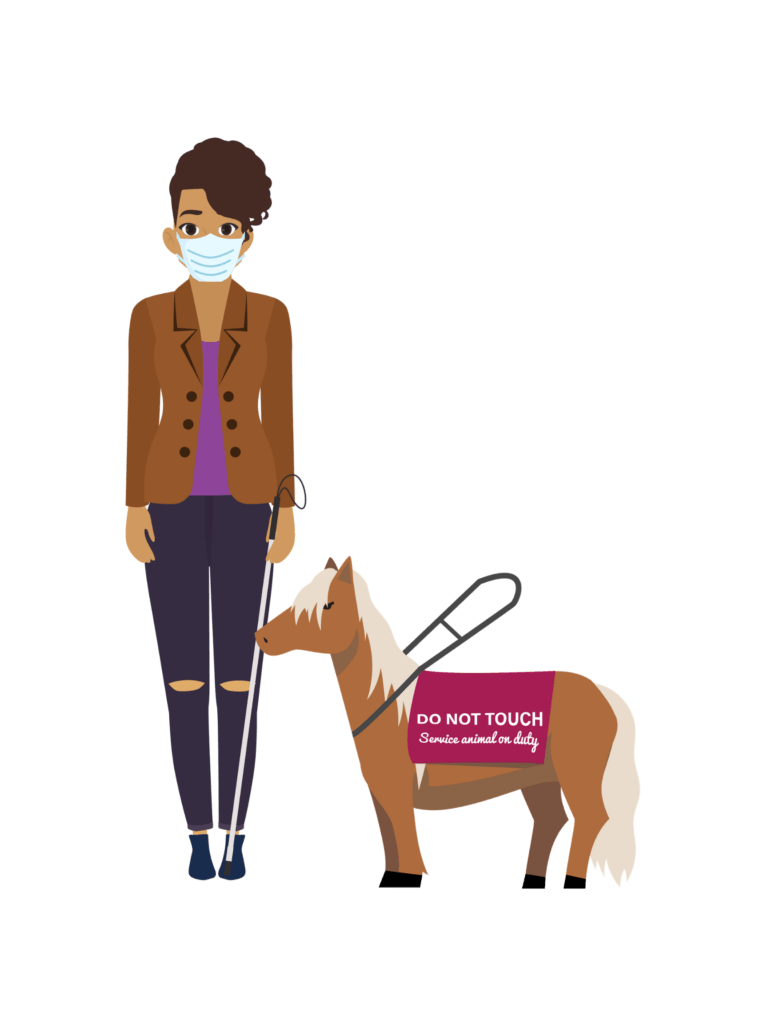The ADA: Service Animals _review


Carrie: We get a lot of questions about our service animal policies, Terrye.
Look at this draft policy:
Emergency Shelter Pet Policy
Disasterville’s disaster shelters do not allow pets. Shelters do allow service animals in all areas. However, each shelter will have an “animal free” area so that people with dog allergies or phobias can have as little contact with the animals as possible.
This policy is:
Good practice and probably in keeping with the Americans with Disabilities Act (ADA)
This is good practice, in accordance with the ADA, and an example of whole community planning. Keep the policy.
Fear of dogs or allergies aren’t valid reasons for denying access or refusing to serve people with service animals, or separating owners from their service animals. The policy accommodates both the needs of people with allergies or phobias and the needs of people with service animals.
Not good practice but probably in keeping with the Americans with Disabilities Act (ADA)
Actually, this is good practice. Some emergency and public health planners get confused about the differences among service animals, comfort animals, and pets. Under the Americans with Disabilities Act (ADA), only service animals are to be permitted in emergency shelters, emergency dispensing sites, and similar areas. They are permitted to be with their owners almost everywhere the owner can go. Comfort animals may be permitted IF local or state law permits.
Probably in violation of the Americans with Disabilities Act (ADA)
Actually, this is good practice. Some emergency and public health planners get confused about the differences among service animals, comfort animals, and pets. Under the Americans with Disabilities Act (ADA), only service animals are to be permitted in emergency shelters, emergency dispensing sites, and similar areas. They are permitted to be with their owners almost everywhere the owner can go. Comfort animals may be permitted IF local or state law permits.

PJ: Terrye, maybe we should back up a minute and discuss service animals. Do you know how the Americans with Disabilities Act (ADA) defines “service animal”?
? Can any animal be a service animal under the Americans with Disabilities Act (ADA)?
Yes. Any animal can be a service animal under the right circumstances
Not quite, try again.
No. Only dogs and specially trained capuchin monkeys can be service animals
Not quite, try again.
No. Dogs and miniature horses are the only animals that can be service animals
That’s right. Under the ADA only dogs and miniature horses can be service animals. The ADA doesn’t consider “service animals” to include animals that provide comfort or emotional support alone. State or local laws may vary.
What are other requirements for service animals under the Americans with Disabilities Act (ADA)?
Service animals don’t need special tags or certificates
People think that service animals need special tags, a special vest, or a certificate but they don’t. They don’t need to be registered. There are 2 requirements.
Service animals must be required because of a disability
True. Anything else?
Service animals must be trained to perform specific tasks related to the disability
True. For example, César’s dog, Ginger, has been trained to open doors for César. Anything else?
Service animals need to be registered
People think that service animals need special tags, a special vest, or a certificate but they don’t. They don’t need to be registered. There are 2 requirements

PJ: People think that service animals need special tags, a special vest, or a certificate but they don’t. They don’t need to be registered. Service animals must be required because of a disability and trained to perform a specific task related to the disability.
For example, César’s dog, Ginger, has been trained to open doors for César.

Carrie: I use a service animal, Fury, trained for wayfinding. You may be surprised that a miniature horse can be a service animal.
If someone with a dog or miniature horse shows up at an Emergency Dispensing Site (EDS) to get a vaccine, the only questions staff can legally ask about the animal are: (1) Is the animal a service animal required because of a disability; and (2) What work has the animal been trained to perform?
You can’t ask the service animal owner whether they have a disability or what disability they have.
From the Rocky Mountain ADA Center:
“Under the ADA, service animals must be harnessed, leashed, or tethered, unless these devices interfere with the service animal’s work or the individual’s disability prevents using these devices. In that case, the individual must maintain control of the animal through voice, signal, or other effective controls.
“A person with a disability cannot be asked to remove his service animal from the premises unless:
1. The dog is out of control and the handler does not take effective action to control it
2. The dog is not housebroken.
“When there is a legitimate reason to ask that a service animal be removed, staff must offer the person with the disability the opportunity to obtain goods or services without the animal’s presence. Staff are not required to provide care or food for a service animal.”
(Rocky Mountain ADA Center, 2020.)
